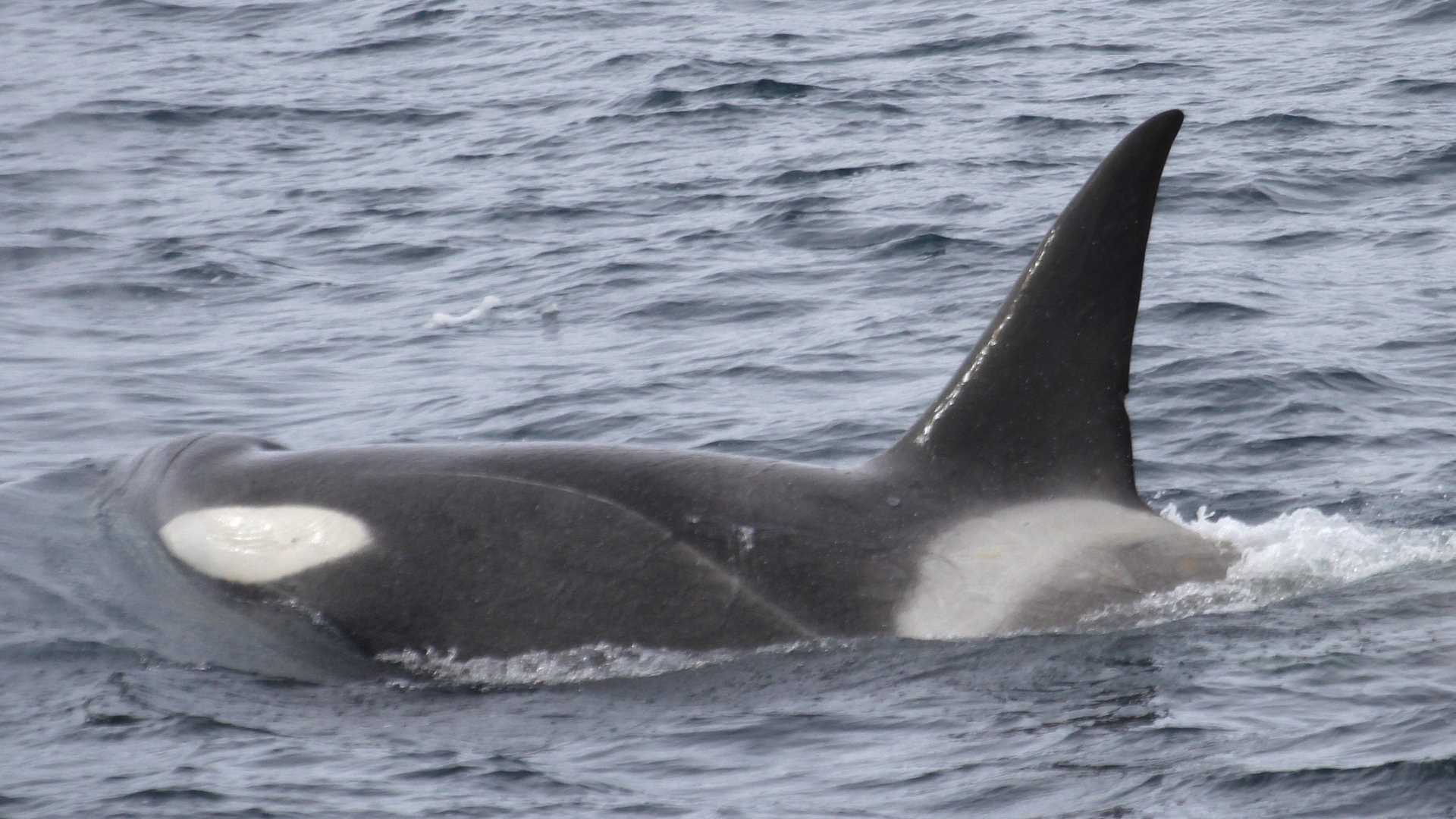Emperors! Surrounded by a sea of tabular icebergs, there was one floating on a perfectly flat rectangular raft of sea ice, recumbent among a clutch of diminutive Adélie penguins. Then standing up, it revealed its full impressive stature of about 4.25 feet before casually shuffling away, like an old gentleman in a frock coat, pausing occasionally to gaze at us as Captain Oliver crept National Geographic Explorer imperceptibly closer. Since emperors are infrequently sighted on Antarctic Peninsula voyages, the excitement was palpable as we experienced this most iconic of penguins amid the muted whirring of camera shutters. And a little further on was another ice floe with another emperor penguin, gain among a group of Adélies, its flash of yellow color just visible in this world of black, white, and blue. Their breeding colony was some 28 miles away on the sea ice at Snow Hill.
After these wonderful early morning encounters, we continued to move towards our next objective, the massive iceberg A68A, the 87-mile-long ice island that broke off the Larsen C ice shelf two years earlier and now lies grounded near Seymour Island in the Weddell Sea. Ship-cruising along its endless northern face, we were thrilled to come upon a group of pack ice killer whales, at least 15 individuals of type B1, hunting along the edge of the brash ice. These large predators are specialists in hunting sea mammals on the sea ice, especially the Weddell seals, and it was fascinating to observe them against the stunning background of the giant tabular iceberg.
It is difficult to comprehend the scale of this iceberg, the largest single piece of ice currently in Antarctica. When it originally broke off from the ice shelf, it was 5800 square kilometers, and consists of ice probably between 2,000 and 5,000 years old. It has traveled 100 miles from the south since then and is so named because it is the 68th giant piece to have broken off in this sector of Antarctica since recording began in 1979.
By the afternoon, we had repositioned northwards. There was too much brash ice to allow a landing, so instead we set off in Zodiacs to explore the glorious seascape to the east of the Joinville and Dundee Islands, a view dominated by another towering tabular iceberg which we could circumnavigate in our Zodiacs. Adélies were everywhere, perched on ice floes, their white feathers gleaming in the Antarctic sunshine. A shy Weddell seal briefly lay on the ice, framed by distant blue towers of ice, and we even saw friendly Vikings purveying hot chocolate among the floes, before we returned home to the welcome comfort of our ship. It was a day to dream of in Antarctica.









